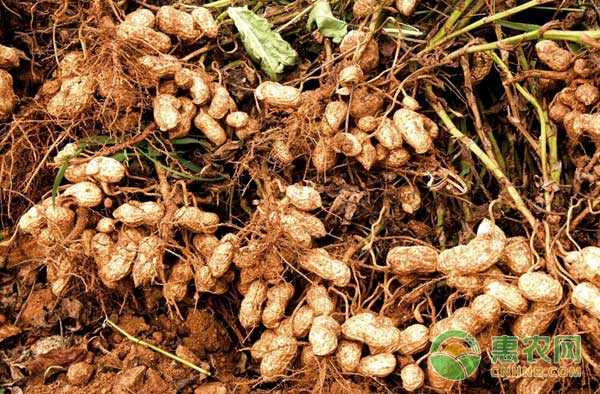Farmers in the southern region like to plant peanuts, which are not only nutritious but also oil-selling. However, the appearance of short stigma, low and low peanut yield, and low yields have really ruined farmers because it is closely related to the income of farmers. What happens to peanuts? What should I do with my own peanuts?

First, the reason for the low yield and low quality of peanut
1. Soil nutrient imbalance
Because peanuts selectively absorb nutrients in the soil, because peanuts have nitrogen fixation, the absorption of nitrogen in the soil is less, and the absorption of phosphorus, potassium, calcium, and other elements is more. Therefore, peanuts are grown in the soil for many years. The nutrient elements are too high or too low. Nutritional imbalance in the soil leads to the growth and development of peanuts and thus reduces production.
2, pests and diseases are aggravated
Planting peanuts on the same land for many years will form specific soil environments and rhizosphere conditions, creating suitable living conditions and hosts for common leaf spot, root knot nematode and pests of peanuts.
3, the root system secretes organic acids causing self-poisoning
When the root system of peanut continuously accumulates excessive accumulation of organic acids during the growth and development process, it will seriously affect the growth and development of roots and the absorption of nutrients and water, resulting in weak growth and poor resistance of peanut plants.
4. Soil microbial community loses balance
The number of fungi in the soil and rhizosphere increased with the increase of planting years, and the reduction of bacteria and actinomycetes caused the transformation of bacterial soil into fungal soil and soil fertility failure. The plant pathogens are mainly fungi, and the saprophytic bacteria and pathogenic bacteria which are nutritious by the plant body increase with the increase of fungi, resulting in an increase in peanut diseases.
5. Reduced soil enzyme activity
Heavy mites reduce the activity of various hydrolases in the soil and affect the decomposition and microbial activities of various nutrients in the soil, resulting in insufficient nutrition and poor reproduction of the plants. Peanut heavy hay has a great impact on yield, farmers should rationally plant peanuts to ensure the quality and yield of peanuts!

 Second, the improvement measures of peanuts
1. Replenish mineral nutrients that cause heavy soil deficiency. According to the fertilizer requirement of peanut, the characteristics of fertilizer absorption and the change of soil nutrients, adjusting the ratio of nitrogen, phosphorus and potassium and appropriately supplementing the trace elements lacking in continuous soil can effectively increase the yield of peanut. However, in this method, the soil needs to be analyzed and determined, and the proportion of mineral nutrients is adjusted according to the results of the measurement.
2. Apply microbial regulators. According to the changes of the rhizosphere microflora of the peanut soil, the relevant research institutions applied microbial regulators to prevent the reduction of continuous cropping of peanuts, screened out an effective microbial preparation, and achieved a 32% increase in yield by experiment. Promote the application. However, the difference between the application of the preparation year is large, and the stability of production increase is poor, which needs further improvement and improvement.
3. Simulated rotation. The wintering crops can be planted after the peanuts are harvested and the next planting time, and the winter crops are turned into the soil during the spring ploughing. The act of harvesting the immature wintering crops is called a simulated rotation. The use of simulated rotation can increase peanut yield by about 25%.
4. Comprehensive improvement measures. The results showed that the comprehensive measures of yield-improving yield were extremely obvious when using heavy-duty peanut varieties, early filming, deep-plowing in winter, fertilizer application at the bottom, control of peanut root-knot nematode and peanut leaf spot. The comprehensive improvement measures of disease-resistant varieties + film early sowing + winter deep tillage + increase of bottom fertilizer + disease prevention and control are practical in production, simple in operation and easy to promote.
Every year from July to September is the season of peanut harvesting. If the peanuts planted in your home are seriously damaged, you can improve the land according to the above measures. When planting peanuts in the coming year, you will achieve a bumper harvest!
CE Certified Disposable Medical Surgical Masks - Type â…¡R:
Features of the Medical Surgical Mask Disposable:
1. CE certificated. Disposable surgical Masks comply with EU standard: EN 14683:2019.
2. Medical grade. Type IIR disposable surgical masks come in an original sealed bag, 20 pcs / bag.
3. Sterile Surgical Mask and Non-sterile Medical Surgical Masks are available.
4. Three layers protection. Hydrophobic outer layer, high filterability meltblown layer and skin-friendly nonwoven inner layer.
5. Easy to use. Adjustable nose clip with steel wire and elastic ear-loops.
6. Trustable and useful. This medical surgical mask will give you comprehensive protection under the high qualityof it.
7. OEM production is also available.
Medical Grade Face Masks,3 Ply Face Mask,Medical Face Mask,Medical Mask
Suzhou JaneE Medical Technology Co., Ltd. , https://www.janeemedical.com